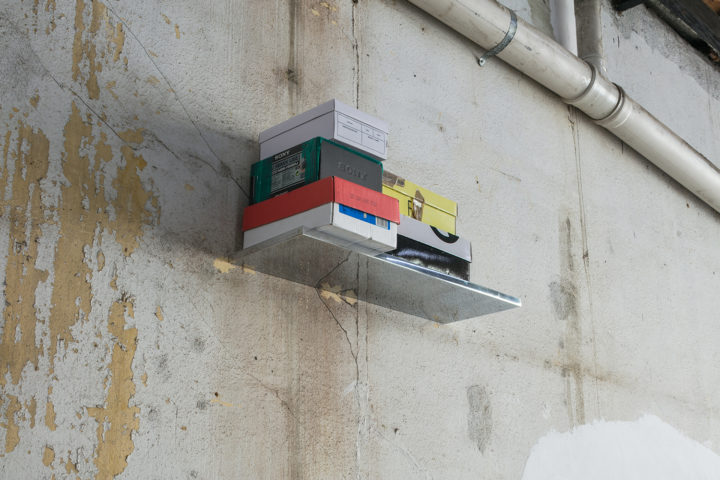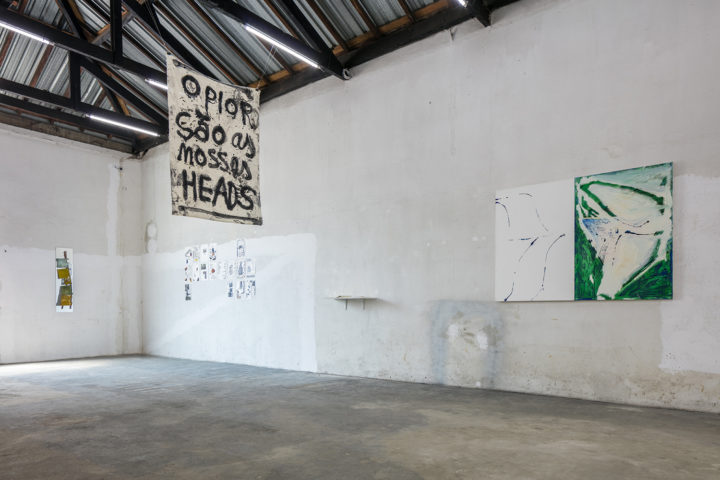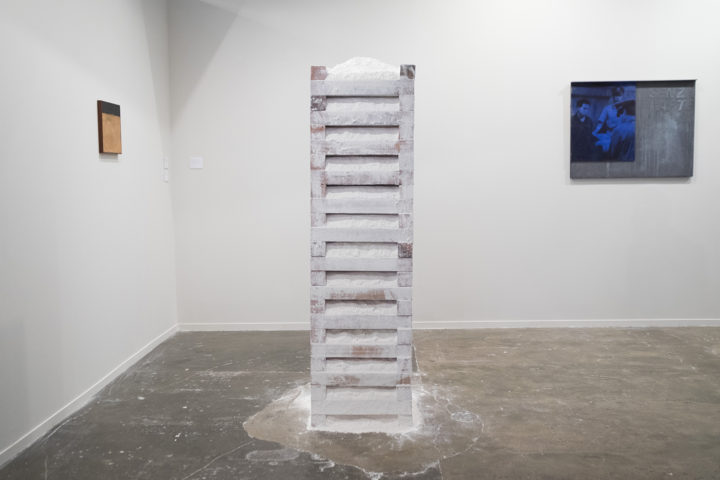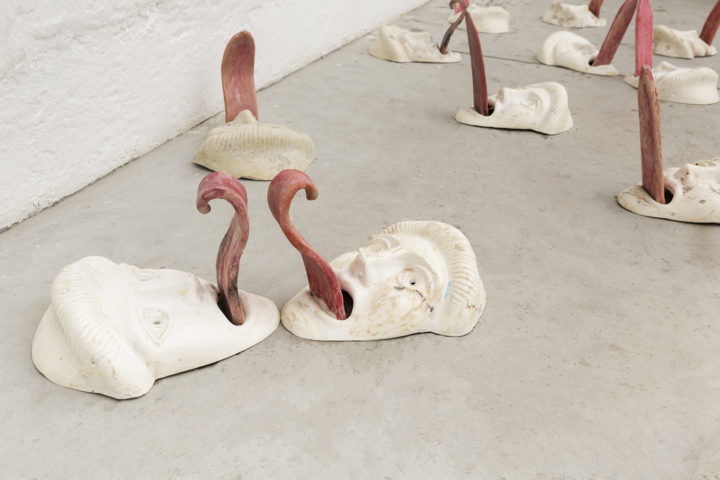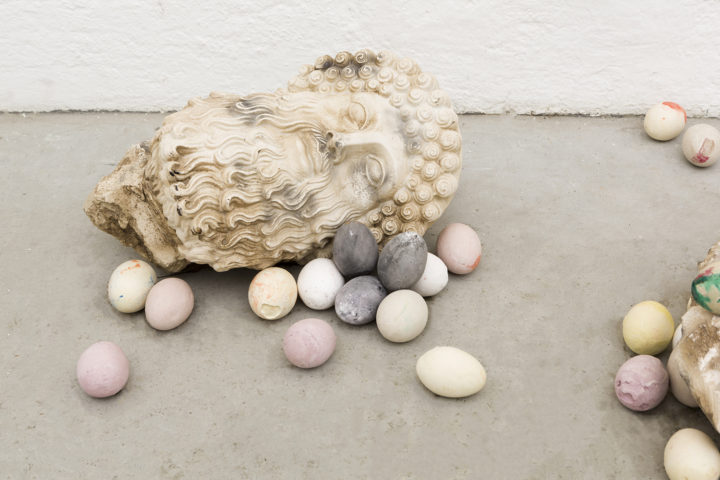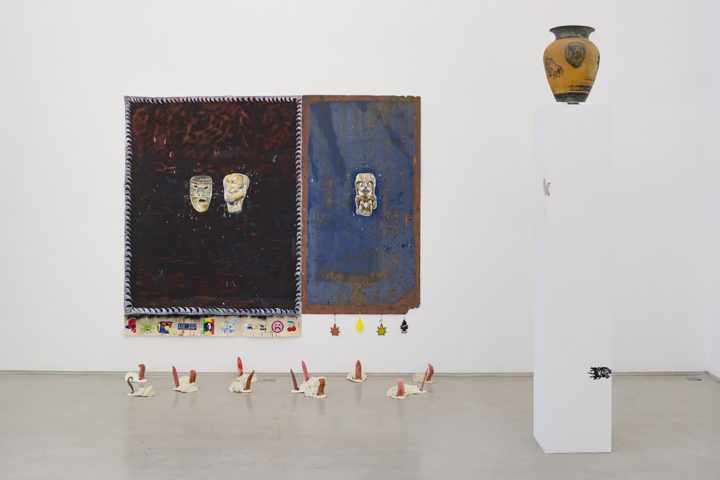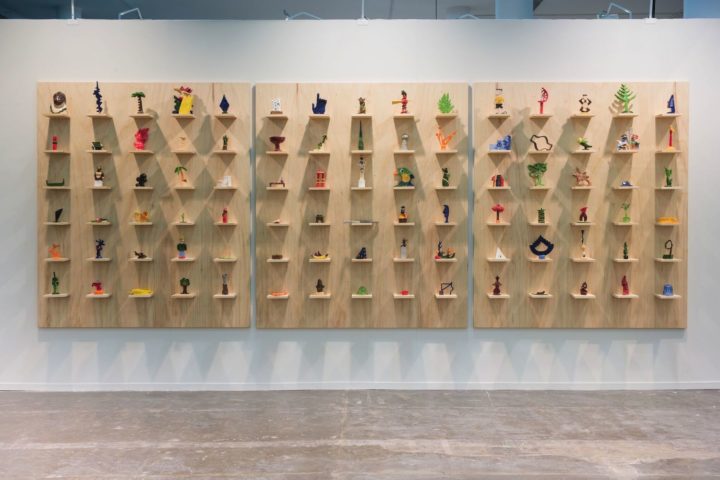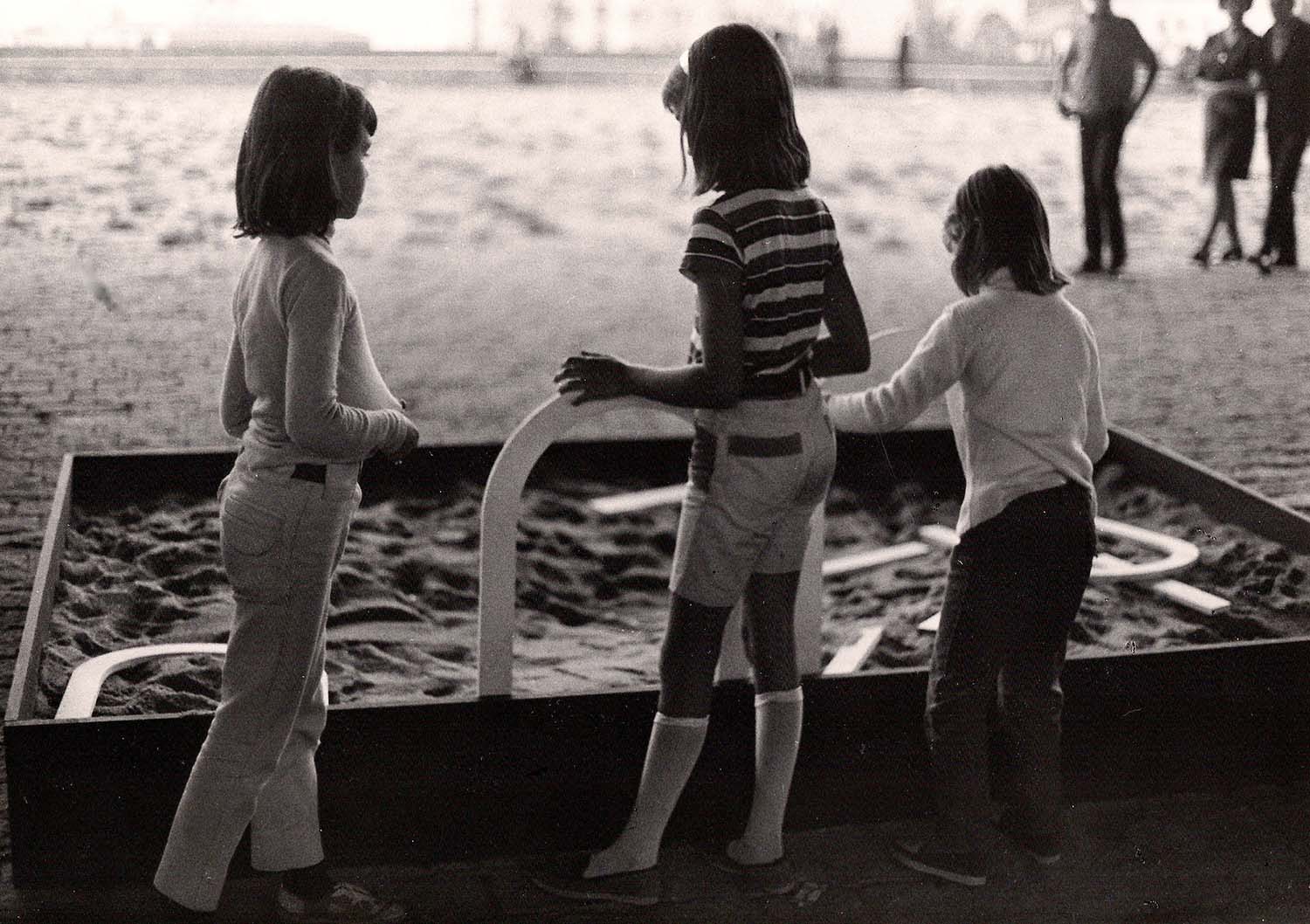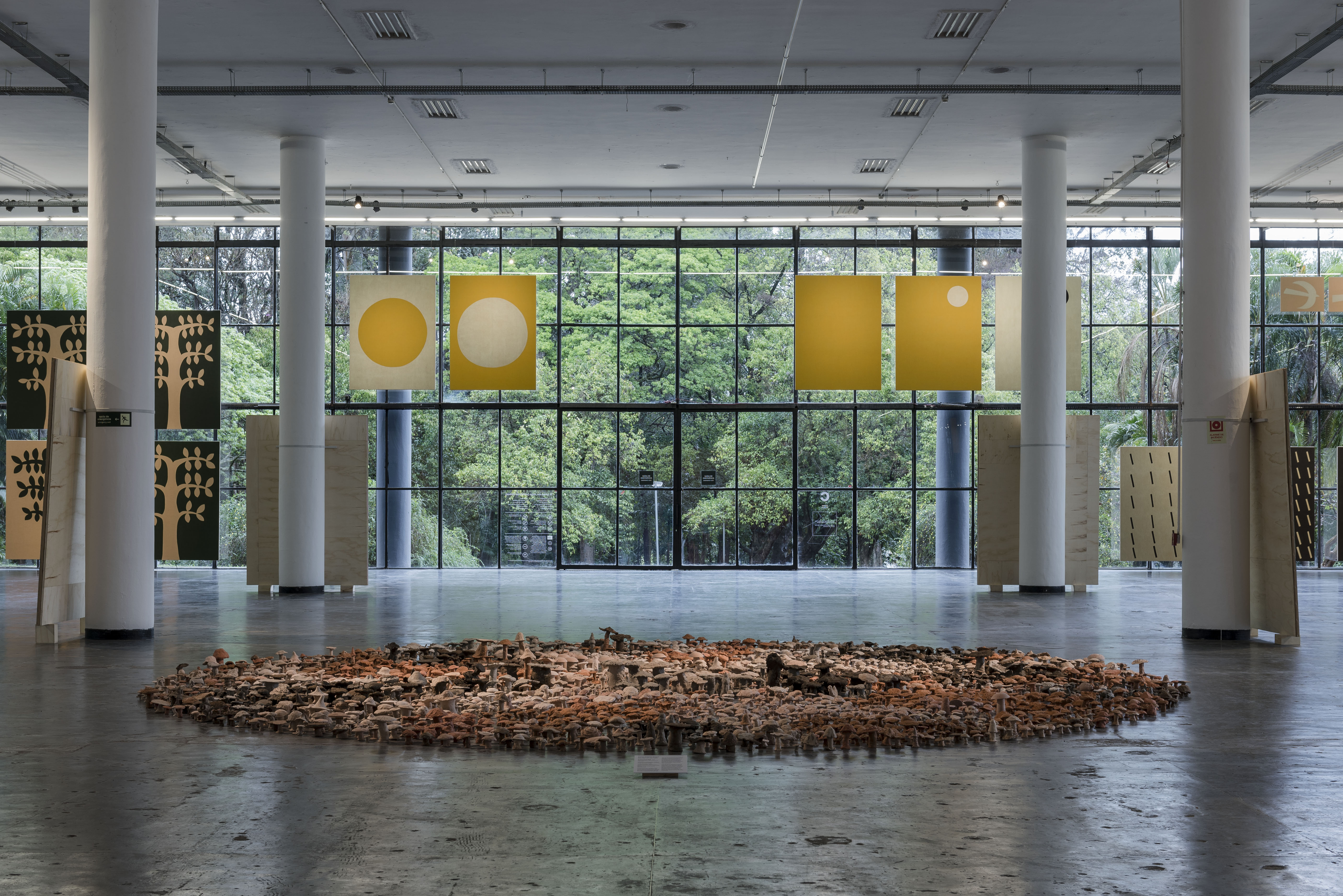In addition to the São Paulo Bienal in September, the annual art fair in April has established a second platform for international gathering in São Paulo. This year activities commenced on the Saturday before the fair with an edition of Condo hosted by Galeria Jaqueline Martins featuring works by Vivian Suter at Proyectos Ultravioleta, Carla Filipe at Nuno Centeno, and Ahmet Ögüt at KOW, among others.
Also downtown, the Pivô foundation opened the next day with a three-person show featuring rarely seen films by Anna Maria Maiolino, an installation of kinetic sculptures by Ana Linnemann, and site-specific architectural interventions by Laura Lima, which force visitors to duck through a lowered ceiling and curatorial assistants to work from an elevated yet stifling box towering above the exhibition. Elsewhere MoMA’s 2009 exhibition “Tangled Alphabets” was somewhat resurrected in the form of retrospectives by Leon Ferrari at Galeria Nara Roesler (“Por um mundo sem inferno” curated by Lisette Lagnado) and Mira Schendel at the Museum of Modern Art São Paulo (“Signals” curated by Paulo Venancio Filho).
SP-Arte, now in its 14th edition, bills itself as a festival rather than a fair, possibly because of the tax incentive laws that support it. A section presenting individual artist booths offered several compelling exhibitions. Cape Town’s Blank Projects presented Pedro Wirz’s Novos Amigos [New Friends] (2013–18), consisting of three wall-mounted timber shelves featuring ninety painted and glazed ceramics. These works had been crafted by the artist according to sketches made by friends and acquaintances who were inspired by Wirz’s tales of his native Paraíba Valley near São Paulo. After last year’s Sania Iveković’s solo booth, Valencia’s Espaivisor presented works by Mladen Stilinović, another Croatian conceptual artist. On view were photographs (Artist at Work, 1978 is an unlimited edition of eight b/w photographs depicting the artist asleep), collages, and acrylic paintings ranging from the early 1970s through 2001. Nearby, the Santiago de Chile gallery Aninat Isabel presented photographic documentation from Lotty Rosenfeld’s ongoing action art (since 1979) for which the artist uses white tape to transform highway median strips into crosses, thus protesting dictatorship and signs of hegemonic power. New York’s Zucker Art Books brought a selection of Dieter Roth editioned artist books to the fair, including his first: Kinderbuch (1957). With Brazilian galleries presenting poema/processo protagonists Falves Silva and Almandrade (at Roberto Alban from Salvador da Bahia), artist books by Lygia Clark (Livro Obra i, 1964/83 at DAN galleria, São Paulo), and cut paper works by Raymundo Colares (GIBI, 1970 at Pinakotheke, Rio de Janeiro, São Paulo, Fortaleza), Roth’s work may gain new significance in discussions of European and Brazilian geometric abstraction.
In the main section, Luisa Strina Gallery presented Alexandre da Cunha’s Amarelinho (2005), a sculpture stack of seventy-two Styrofoam boxes used by mobile beverage vendors on the streets of Brazil. At Fortes d’Aiola Gabriel, artists Bárbara Wagner and Benjamin de Burca introduced five lenticular prints from Como se fosse verdade [As if it were true] (2017), for which they had invited forty-three commuters using a bus terminal in the periphery of São Paulo to pose for and give design indications that resulted in fictional record covers.

The so-called Repertoire section featured individual artist presentations with works produced until the 1980s. Berenice Arvani from São Paulo opted for a staging of historical paintings and works on paper by João José Costa, one of the lesser-known members of Grupo Frente (1954–56) that paved the way for the constructivist movement in Brazil. Sé Galeria hung Arnaldo de Melo’s figurative sketches painted on collaged boards of New York gallery invitation cards during the mid-1980s.
While works by di Cavalcanti, Volpi, and other classics of Brazilian modernism are offloaded in the section dedicated to secondary-market dealers every year, one booth stood out: Bergamin & Gomide offered a neat selection of visceral sculptures and paintings by Günther Uecker, José Resende, Nuno Ramos, Antoni Tapies, Mira Schendel, Artur Barrio, and Tunga — all in brown, beige, white, and black tones.
Far away from the hustle of the fair, the cultural center Casa do Povo presented the performance Okidoki by American dancer and choreographer Trajal Harrell. Capturing our attention for nine minutes, Harrell’s piece was based on vogueing moves and saw the dancer flanked by audience members that he approached and poked, expressing anxiety and desperation that amplified as a score by Tom Monteiro wore on. On our way home we wondered if the work was not a parody of art fair chit chat and an appetite for artworks predisposed to commodification against a backdrop of struggling commercial galleries and failing democracy.

